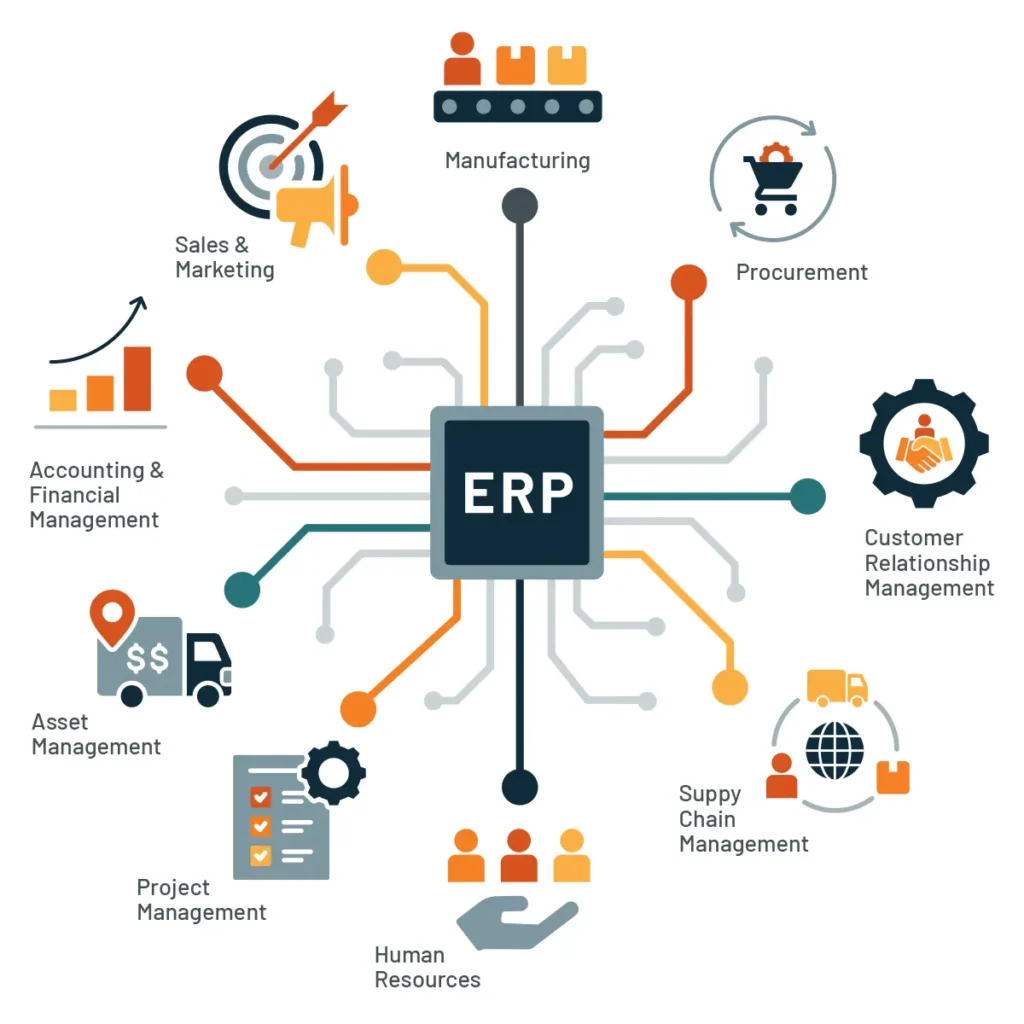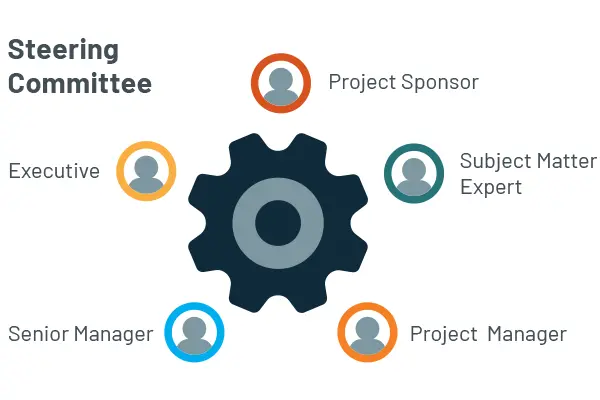Streamlining Your Business with ERP
A Guide to Successful Implementation
MAY 3, 2025 // 5 MIN READ
Many small to mid-sized businesses face challenges in efficient data management and timely informed decision making. Information is often scattered across departments and formats, making compilation and reporting time-consuming. The solution frequently involves implementing a new software platform, and many companies opt for an Enterprise Resource Planning (ERP) system.
What is ERP?
ERP is a unified software system comprising modules that manage essential business processes and address specific operational needs. There are hundreds of ERP systems available, each varying in price, functionality, technology, and industry focus.

Do You Need an ERP System?
Before evaluating software solutions, it’s important to understand your company’s needs and align the technology decision with your business priorities and strategy. Key questions to ask include:

What critical processes are necessary for business growth?

What systems are working well, and which need improvement?

How do strategic initiatives align with a technology system implementation?
If improvements are necessary to support your strategy, it’s time to set up an internal project team.
Setting Up the Project
A successful ERP project requires strong leadership, clear team structure, and committed resources. Key roles typically include a Steering Committee for oversight, a senior leader Project Sponsor for accountability, a Project Manager to drive execution, and Subject Matter Experts (SMEs) from various departments. If an experienced Project Manager is not available, a high-performing junior employee supported by an experienced consultant can be a good alternative.

Defining Company Needs for ERP Systems
Begin by taking inventory of your current processes and systems, including hardware and software, and then evaluate the needs by following these steps:
1. Identify Key Processes and Data Requirements
Evaluate your company’s core functions such as sales, operations, finance, and HR. Identify the data needed for decision-making and consider how processes will evolve with growth. Creating workflows for key processes will clarify current operations, identify improvement areas, support training, and help guide ERP software selection.
2. Define Clear Objectives
Identify key needs that the system must address, such as outdated technology, reporting challenges, inefficiencies, or poor data management. Consider factors like customization vs. configuration, bolt-ons vs. end-to-end solutions, and cloud vs. on-premises options, balancing cost, complexity, scalability, and control based on your organization’s needs.
3. Integration and Core Requirements
Identify how the ERP system will integrate with existing systems, such as payroll or CRM software. Seamless integration ensures smooth data flow across the organization. Additionally, evaluate key functionality based on your core processes, such as field data collection for timesheets or inventory management.
4. Define the User Base
Consider how many users will require access and their roles within the organization. This will determine the appropriate licensing model and software cost. Keep in mind that user base typically expands beyond current users with new software functionality.
5. Company Structure Considerations
If your business operates across multiple company entities and countries, ensure the system supports international compliance, currency handling, diverse regulatory environments and multi entity financial reporting.
6. Project Phasing
ERP implementation projects are complex and resource intensive. Consider a phased approach where only core functions and/or limited locations are implemented initially vs. a “Big Bang” approach where the new solution is deployed fully in all locations.
Navigating ERP Implementation
Implementing an ERP system is transformative but requires careful planning. Here are the key elements involved in a successful ERP implementation:
Steering Committee
A dedicated Steering Committee is crucial for overseeing the project and making key decisions. Regular meetings ensure real-time updates and effective problem-solving.
Leverage Internal Resources
Involve SMEs from different departments to ensure the system meets the needs of each area and to support configuration, testing, and training.
Fast-Paced Implementation
Establish a clear schedule for decisions, testing, and feedback to maintain momentum. Streamline decision-making to keep the project moving.
Legacy Data Management
Decide which data will be imported into the new system and what will be archived. This is an opportunity to cleanse data ensuring only relevant and accurate information is transferred.
Change Management and Training
Successful ERP adoption requires change management with a clear training plan and documentation covering software use, business processes, and general computer skills where needed. The “Train the Trainer” approach where select employees train others is often used to manage costs and build ownership of the new system amongst the users.
Lessons Learned from ERP Implementations
Implementing an ERP system can be challenging, some common pitfalls include:
Underestimating Time and Resources
Many businesses underestimate ERP implementation time. Set realistic timelines that include adequate planning, testing, and go-live phases.
Lack of Cross-Functional Representation
Involving all key departments in the ERP selection and implementation process ensures that the system meets the diverse needs of the business.
Understanding Existing Processes
A comprehensive analysis of current workflows helps identify gaps that the ERP can address, ensuring the new system aligns with the organization’s needs.
Customization Challenges
Excessive customization can increase costs and lead to longer implementation times. Focus on adapting business processes to align with ERP best practices.
Overlooking Change Management
An ERP system is not just a technical or accounting change; it’s a cultural shift. A strong change management and training plan will help employees adapt effectively.
Final Thoughts
An ERP system can streamline operations, improve decision-making, and enhance efficiency in small and mid-sized businesses. However, successful implementation requires careful planning, clear definition of needs, and ongoing communication and training. By following these guidelines, businesses can navigate the complexities of ERP adoption and unlock the full potential of their technology investment.
About the Authors
Colin and Laura founded McNally Brown Group in 2012. They both have engineering backgrounds and are graduates of the Richard Ivey Executive MBA Program. Colin and Laura bring complementary expertise, a balance of hands-on experience, technical training, family business knowledge, and international experience to clients.
Explore Related Resources to Streamlining Your Business with ERP: A Guide to Successful Implementation

Unlocking Growth: Digital Transformation for Small and Mid-Sized Businesses
Digital transformation is critical for small and mid-sized businesses (SMBs) to stay competitive and improve business performance. Adopting technology to better serve customers, improve processes and enhance efficiency can be a real competitive advantage. Here’s how SMBs can develop and execute a strategy for successful transformation.

The Power of a Clear Strategy: Unlocking Success for Your Business
Does your business have a clear strategy? And if you were to ask your leaders what that strategy is, would you hear consistent answers? If the answer is “no,” your business might be missing a critical piece of the puzzle when it comes to sustained success.


